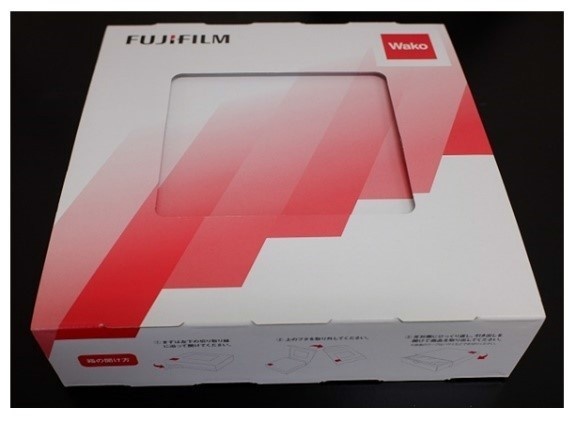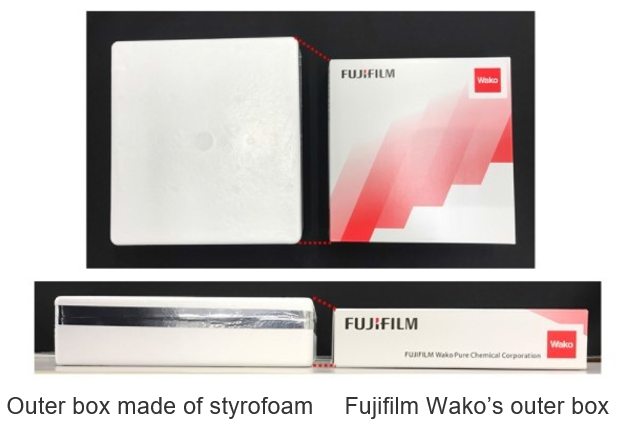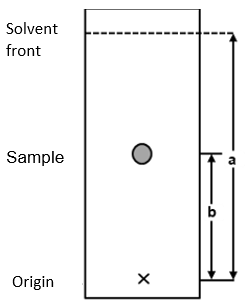Thin Layer Chromatography (TLC)
Thin layer chromatography (TLC) is a method that uses a thin layer made of a stationary phase such as silica gel, polyamide, alumina, etc. on a glass or aluminum plate, separates the mixture sample into each component with a mobile phase. TLC is widely used for substance identification, purity testing, and for examining separation conditions when using column chromatography. Fujifilm Wako provides TLC plates for simple analysis, preparative separation and purification, coated with various stationary phases according to the purpose. Fujifilm Wako also offers various related products such as carriers for TLC plate preparation and ready-made TLC stains.
More Information
How to Select TLC Plate
(1) Type of carrier
| Unmodified silica gel | Used in adsorption chromatography mode, mainly suitable for separation of acidic or neutral compound. |
|---|---|
| Chemically modified silica gel | Various functional groups are bonded to the silanol groups on the surface of unmodified silica gel to change the function. C18 modified silica gel, which is octadecyl group (ODS) bonded silica gel, suitable for reversed-phase chromatography mode. NH2 modified silica gel, which is aminopropyl group bonded silica gel, suitable for separation of sugars, catecholamines, etc. |
| Polyamides | Used in adsorption chromatography mode, suitable for separation of phenols and carboxylic acids. |
| Alumina | Used in adsorption chromatography mode, suitable for separation of basic compounds. |
| Cellulose | Used in Normal phase chromatography mode, suitable for separation of hydrocarbon compounds. |
(2) Pore size/specific surface area
The smaller the pore size, the greater the specific surface area of the silica gel and the higher the resolution of small molecules. Conversely for macromolecules such as proteins, the larger the pore size, the higher the resolution. It is necessary to select an appropriate pore size so that sample molecules can easily enter and exit the pores.
(3) Type of support
Glass has excellent chemical resistance and is the most widely used. Aluminum and paper can be cut easily with scissors, but the carrier peels off from support or the TLC bends depending on the developing solvent. In addition, strong acids/bases cannot be used as developing solvents or coloring reagents.
(4) Type of fluorescent substance
| Not contain | It is suitable for detection of fluorescing samples and spot detection using coloring TLC stains (sulfuric acid, ninhydrin, iodine, etc.) because it does not contain fluorescent substances. |
|---|---|
| Mono fluorescent substance | 254 nm UV irradiation causes the entire plate to fluoresce green, and samples with UV absorption turn black colored spots. |
| Mixture fluorescent substance | Red, green and blue fluorophores substance are added. Under broadband UV (250-400 nm) irradiation causes the entire plate to white, and samples with UV absorption turn the characteristic colored spot such as, red, blue, etc. |
Physical Properties of TLC Plates
Silica gel (unmodified)
| Product name | Pore size | Specific surface area | Pore volume | Layer thickness | Support | Sticking agent | Fluorescent substance | Detection |
|---|---|---|---|---|---|---|---|---|
| Silicagel 70 TLC Plate-Wako | 7 nm | 450 m2/g | 0.8 mL/g | 190-290 μm | Glass plate | Polymer | Not contain | Color TLC stains |
| Silicagel 70 F254 PLC Plate-Wako | Mono fluorescent substance | UV (254 nm) |
||||||
| Silicagel 70 FM TLC Plate-Wako | Mixture fluorescent substance | Broad UV (250-400 nm) |
||||||
| Silicagel 70 PF254 Plate-Wako | 700-900 μm | Mono fluorescent substance | UV (254 nm) |
|||||
| Silicagel 70 F254 TLC Plate-Wako | 900-1200 µm | Mono fluorescent substance | UV (254 nm) |
|||||
| Wakogel® FM Plate | 180-250 μm | Cast/starch | Mixture fluorescent substance | Broad UV (250-400 nm) |
||||
| Chromato Sheet | - | - | - | 300-400 μm | Paper | - | Mono fluorescent substance | UV (254 nm) |
NH2 modified silica gel
| Product name | Pore size | Specific surface area | Pore volume | Layer thickness | Support | Sticking agent | Fluorescent substance | Detection |
|---|---|---|---|---|---|---|---|---|
| NH2 Silica Gel 60 F254 Plate-Wako (layer thickness 0.25 mm) | 6 nm | 450 m2/g | 0.7 mL/g | 190-250 μm | Grass plate | Polymer | Mono fluorescent substance | UV (254 nm) |
| NH2 Silica Gel 60 F254 Plate-Wako (layer thickness 0.5 mm) | 400-550 μm | |||||||
| NH2 Silica Gel 60 F254 Plate-Wako (layer thickness 0.75 mm) | 650- 850 μm |
Polyamide
| Product name | Pore size | Specific surface area | Pore volume | Layer thickness | Support | Sticking agent | Fluorescent substance | Detection |
|---|---|---|---|---|---|---|---|---|
| Polyamide FM Plate | - | - | - | 70-110 µm | Glass plate | Cast | Mixture fluorescent substance | Broad UV (250-400 nm) |
TLC Plate Outer Box


-
- Outer box made of paper for easy disposal.
- Also can be used for storage!
- Smart design without bulk (vertical 234 mm × width 226 mm × thickness 58 mm).
How to use

What is Thin Layer Chromatography (TLC)?

Thin-Layer Chromatography (TLC) is chromatography using a thin layer plate in which a carrier is fixed to a support. When one end of the TLC is immersed in solvent, the solvent moves upward through the gaps in the carrier. If sample is present on the plate, the sample will move by the solvent movement. At this time, the distance that the sample moves (Rf value) varies depending on the degree of adsorption to the carrier and the difference/balance in affinity to the moving solvent (mobile phase). From this principle, Rf value is used to separate and identify organic compounds in TLC.
For research use or further manufacturing use only. Not for use in diagnostic procedures.
Product content may differ from the actual image due to minor specification changes etc.
If the revision of product standards and packaging standards has been made, there is a case where the actual product specifications and images are different.




